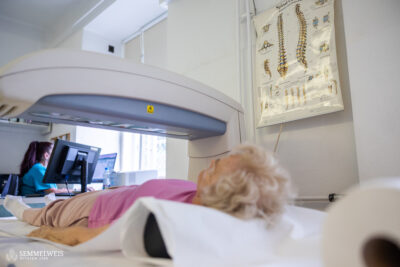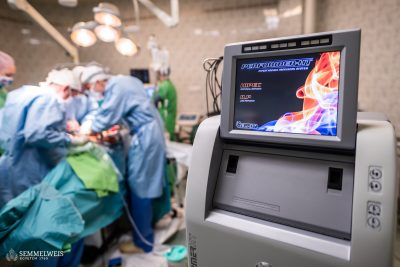The survey was conducted during the 3rd and 4th wave of the pandemic, between July 2021 and May 2022, to find out what Hungarian medical specialists and residents know and understand about digital health. How do they use these tools, what do they think are the advantages and disadvantages of using them, and how the development of digitization is transforming the doctor-patient relationship in everyday life? The answers show that doctors are open to change, with more than 90% using the internet for their work on a daily basis. In terms of age, the youngest age group is the most enthusiastic and those aged 35-45 are the most intensive users of the internet for health purposes.
“Important finding of the research is that there is a great need for the digitization of healthcare to become an integral part of everyday medicine and medical education in Hungary, with 70 percent of respondents considering the future unimaginable without it,” Dr. Zsuzsa Győrffy, associate professor and one of the leaders of the research said. She added that the national survey also shows that a significant proportion of the doctors surveyed think it is good that patients use digital tools for disease monitoring and education. Patients also expect doctors to help them with what to read, which websites to consult and which apps to use. Nearly 80% of respondents also recommend health promotion and prevention websites to their patients on a more or less regular basis, and nearly half of them recommend related apps and social media resources. Not surprisingly, GPs are in the majority – they are the most supportive of telemedicine. “It is also noticeable that professionals have a very clear understanding of patients’ needs, with the four most important ones – email communication, electronic sharing of images and findings, online appointment booking and remote consultation,” Dr. Edmond Girasek, another leader of the survey pointed out.
The survey also answers questions about advantages and disadvantages of digital solutions. Among the positives, doctors mentioned efficiency, convenience and time savings, while the negatives include patients often misinterpreting the data they share, some of them misusing digital tools and the increased possibility of misunderstandings in the doctor-patient relationship.
In parallel with the physician research, the research team also conducted a representative telephone survey of 1,500 people in Hungary, entitled “E-Patients in Hungary”, between 5-13 October 2021, to find out what digital solutions patients use in their everydays.
Eszter Csatári-Földváry, translation: Rita Kónya
Cover image (illustration): iStock
Photo by Bálint Barta – Semmelweis University



